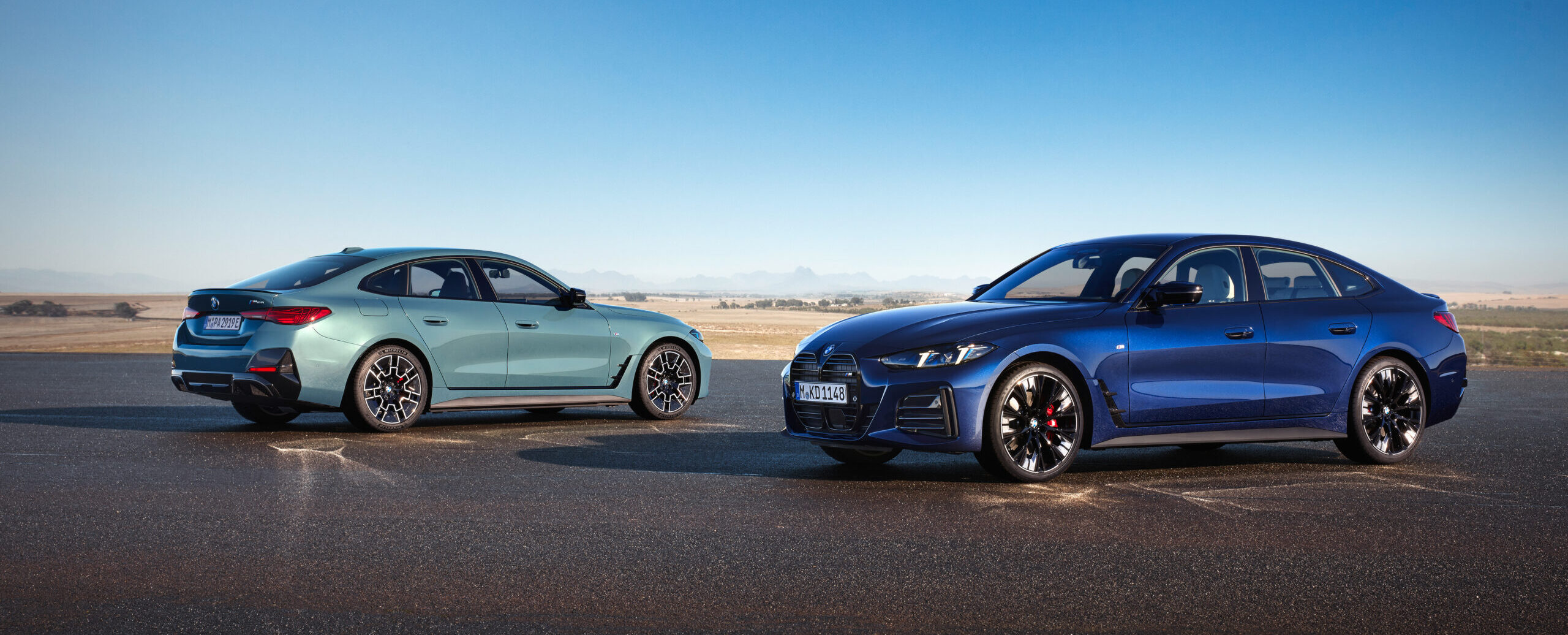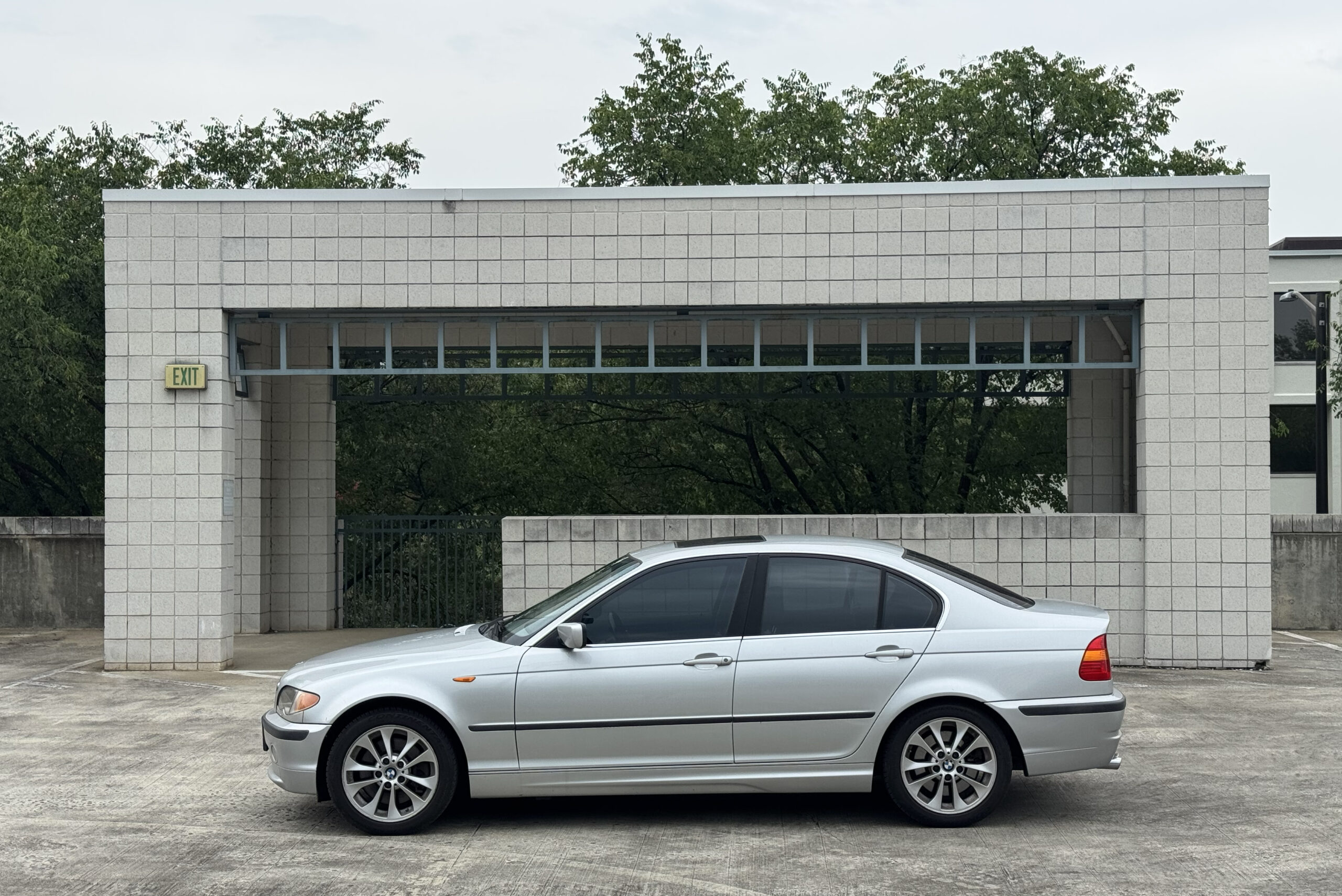It’s said that if you sell a car to a friend, you’ve never really rid yourself of it, and there’s a lot of truth to that. But sometimes, that’s a good thing.
About seven years ago, I bought a 1999 Z3 2.3i from a woman who lived about 40 miles from me. The car had been left outside over the winter, and moisture had seeped through the convertible top and caused mildew to grow in the interior. But other than that, a few minor dings and scrapes, and a dead battery, there wasn’t really much wrong with it. I paid $3,000 for the car, which at the time made it the least expensive un-wrecked running six-cylinder Z3 in America. I threw a fresh battery in it, aired up the tires, and drove it home.
Now, anyone who’s ever owned a fully open car knows that there’s a physiological relaxation response that occurs when you drive one. The sun and the wind hit your face, and your whole body just goes… ahhhhhhh. It’s quite remarkable, and it happens whether you’re driving some American luxo-barge or a lithe little two-seater. Of course, if the car is a lithe little two-seater, the relation response is magnified by the almost illegal fun of actually driving the car while having the response. So it might not matter if the car is a Z3 or a Miata or a Boxster or a Fiat Spider or an Alfa Spider (what is it about Italians and arachnids?) or a Honda S2000 or any number of other well-priced roadsters. It just happens that Z3s are our well-priced roadsters. So I guess it wasn’t at all surprising that I loved owning the Z3.
What was surprising, though, was the reaction the car got from many of my female relatives and friends who never gave a second look to my other cars. The lines of the Z3 never really lit me on fire, particularly the somewhat bulbous nose (Satch’s wife has pointed out that it’s impossible to unsee the mental image if somebody refers to it as a Joe Camel nose), but there was something about the shape of the car that seemed to—and I say this knowing the hazards of gender stereotyping—make women go, “It’s so cuuuute!” My sister, who is my polar opposite in terms of car passions, lit up like a Christmas tree (or, more properly, like a Chanukah bush) when I offered to loan her the car for the weekend. Our neighbor Kim, who lives 100 feet away (which, after negotiating the four left turns required by the fences separating our property, is perhaps more like a hundred yards), was absolutely smitten by the car, and when she drove it, the cares of the world seemed to melt off her like an inch of April snow in the sun. We began calling it Zelda the Therapy Car, and Kim; my wife, Maire Anne; my sister; and other women friends jumped at the offer to “schedule therapy” with her.

I had to admit, it WAS kind of, you know, cute.
I enjoyed the hell out of Zelda, particularly in spring and summer (by far the best seasons for a ‘vert), but the problem with owning a convertible is, as demonstrated by the fate that it suffered when the previous owner left it outside, that all convertibles eventually leak, and if they’re not garaged, moisture gets in and mildews the interior.
I’d shuffle the car between the spaces here at the house and the four garages I rent in Fitchburg, but last year the roof on the Fitchburg garages began to leak enough to make the garages humid. The other cars didn’t really seem to mind, as long as I kept them closed up and with a pack of Damp-Rid inside, but the Z3, with its porous canvas top, fell victim. About fifteen months ago I went out to Fitchburg to check on the cars and found the Z3’s interior absolutely coated with mildew. The landlord planned to fix the roof, but it couldn’t be scheduled until spring.
Because of both a general space crunch with the cars—and the specific problem with leaving the Z3 to mildew—I made the difficult decision to sell the Z3. I brought it home, cleaned up the mildew, and prepared a Craigslist ad. But as soon as our friend Kim heard about my plans to sell Zelda, she offered to buy her. I tried to talk her out of it, as I didn’t think she had anywhere to garage it, explaining that it’d kill the car if it sat outside over the winter. But then she worked a deal with her neighbor for space in an inconvenient-to-access garage behind the house. With storage enabled, she bought the car.
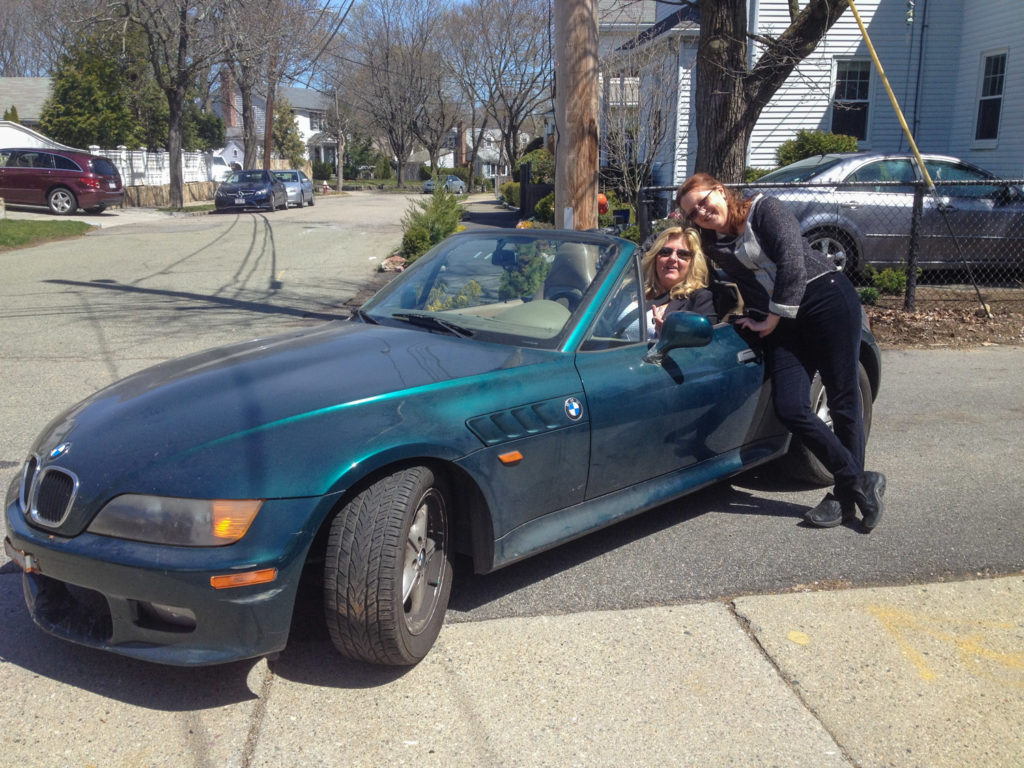
Kim (seated), my wife, Maire Anne (right), and the newly-transferred Zelda.
Due to a number of circumstances, though, Kim didn’t really use the Z3 much more than when I was simply loaning it to her; it mostly sat in the garage. In addition, the car had a parasitic electrical drain problem that I’d never solved, which would run the battery down if it wasn’t used every few days. There was no electricity in the garage for a trickle charger. I’d explained to Kim and her son Tyler about how the negative battery cable had to be disconnected using the little 10/13-mm wrench in the tool tray right next to it every time they parked it overnight, but they’d never remember to do it, so when they wanted to use Zelda, they’d find the battery completely flatlined, they’d call me, and I’d need to pull the battery out, bring it back to my house, charge it up, and then test it with my Cen-Tech battery analyzer to get a resistance reading across the plates and judge how dead it really was.
Many of us know how lightly-used cars sometimes go from stored to need-to-use-it-RIGHT-NOW when the primary car suddenly dies. Twice in the last year Zelda needed to be pressed back into immediate service due to a problem with either Kim’s or Tyler’s car. Both times, Zelda’s battery was dead, and both times Kim or Tyler went to Costco and bought a brand-new battery rather than wait the several hours for the recharge-and-testing cycle to find out if the drained battery was re-usable (once it wasn’t; once it was, and that resurrected battery is now in my Z3 M coupe).
At the start of this winter, rather than have this happen a third time, I offered to take Zelda’s battery back to my house and just leave it on a trickle charger. In early March, shortly before the coronavirus hit, Kim asked me to put Zelda’s battery back in. I did, leaving it unhooked so it wouldn’t run down. Then, about a week ago, with the arrival of warm weather, her son Tyler wanted to take the car for a spring stress-busting drive. He connected the battery, started Zelda, and got her out of the backyard garage and onto the street.
But when he began driving the car, something was obviously wrong. It stumbled badly, and wouldn’t seem to rev over 2,500 rpm. He also noticed that the EML light on the dashboard was on. Tyler called me and Kim texted me, sending me the photo below.
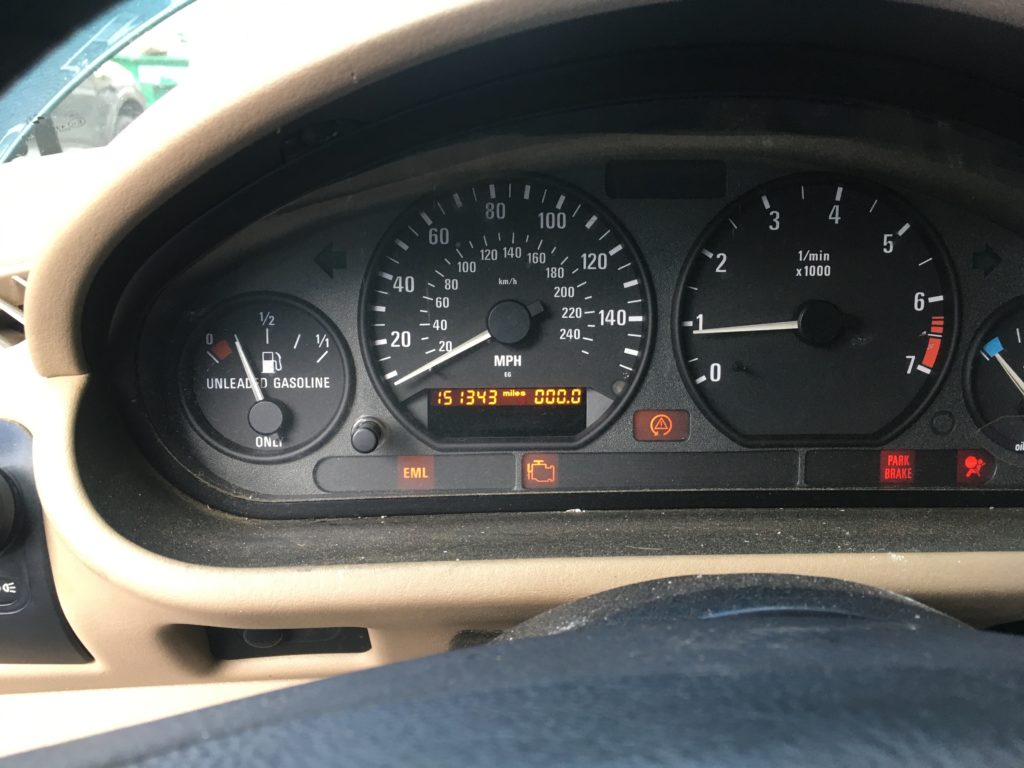
The EML indicator (left) and the “check engine light” to its right.
When I saw the photo, I explained to them that because nearly ALL of the dashboard indicator lights were on, it could be due to the battery being low again, or the alternator not charging the battery, but Tyler said that the battery had been unhooked and the car cranked right over when he connected it, so it was unlikely to be that. I then explained how cars often have a “check engine light” (CEL) and a separate, more important “service engine soon” light. I added that the “check engine light” is intended to be an emission-controls-specific light that often illuminates for things that are not really that important (such as the dreaded “minor evaporative leak” code that’s never just a loose gas cap like you read online), so manufacturers began putting in a separate light that’s illuminated by actual important engine-management issues, and how on Zelda, this is the EML light. I explained that the combination of the EML light and the engine not revving over 2,500 could be due to the car being thrown into limp-home mode by some malfunction—in other words, that this could be the car’s reaction to the problem, not the actual problem.
I explained that, while for a CEL malfunction I could plug in my generic OBD-II code reader and pull the code, for an EML malfunction, to find the problem, I or someone else would probably need to connect a BMW-specific scan tool. I knew that I had an old Windows XP laptop with some aftermarket BMW scanner software and a USB plug-in to the OBD-II port somewhere in the basement. I found it, charged it up, and said that I’d come over and check it out, as long as I could do so in a safe socially-distanced manner wherein I interacted with the car, but not with the people. They were grateful and said they’d leave the key in the car for me.
In the meantime, I messaged friend and CCA service adviser Paul Muskopf. I described the symptoms and asked him what he thought the most likely culprit was. “Stuck throttle plate,” he immediately responded (the car has an electronic throttle, so there’s not a cable directly pulling open the throttle plate). “Pull off the intake boot, check that it’s not split, check that the throttle moves freely, and clean off the carbon if it doesn’t.”
I donned a mask and gloves and went over to Kim’s with the laptop. I plugged it into Zelda’s OBD-II port, but for some reason the scanner software wouldn’t connect. I went back home and tried it in the X5, and it worked fine. I tried it in the Z3 again, in both the OBD-II port and the big round under-hood connector via an adapter, still to no avail.
Although for an EML light issue I certainly preferred to read the BMW-specific codes, I grabbed my generic Actron OBD-II scanner and plugged it in. It pulled up a P1580 code with text that referenced idle speed. I thought of the idle-control valve. However, when I searched for “BMW Z3 P1580” on my phone, the first few hits said, “Throttle body mechanically stuck.” Paul appeared to have been right.
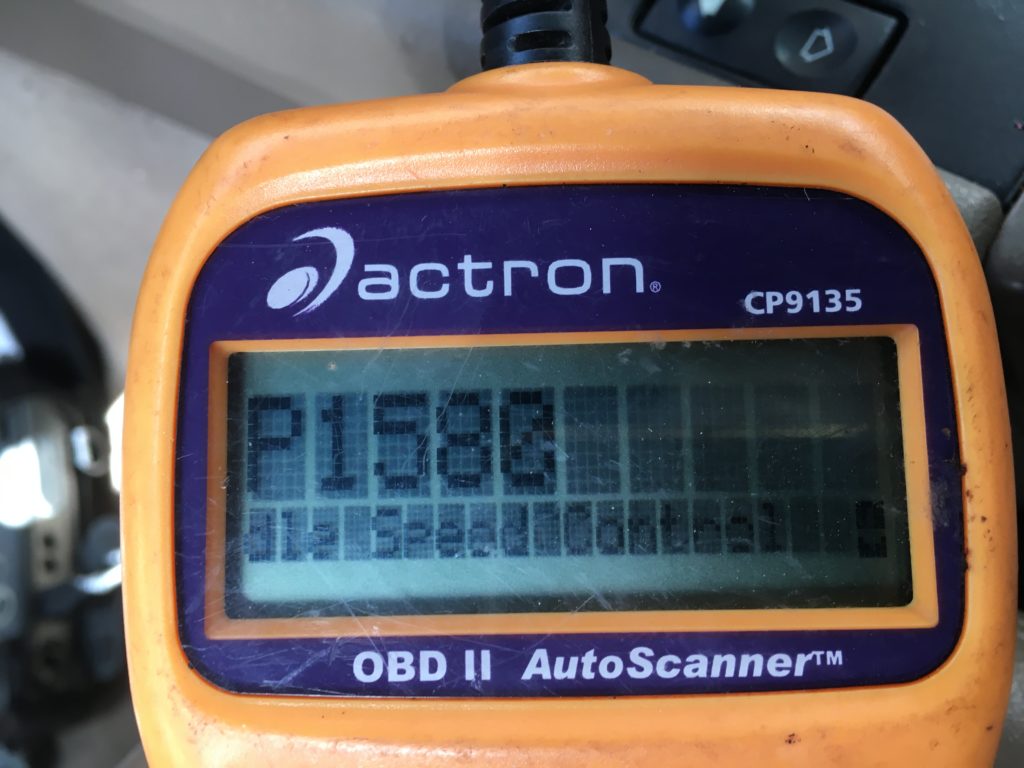
The old Actron to the rescue.
Rather than fix the car in their driveway, I limped it the four right turns back to my house, essentially idle-driving it in second gear. It didn’t take much to pull the intake boot off and expose the throttle. Sure enough, it was stuck from either carbon deposits or corrosion. I pried it open with my fingers, blocked it open with the handle of a screwdriver, cleaned it up, and put a dab of SiliKroil lubricant on the shaft. While I was in there, I also pulled the idle-control valve, cleaned it, and made sure I could hear it rattle when I tipped it side to side.
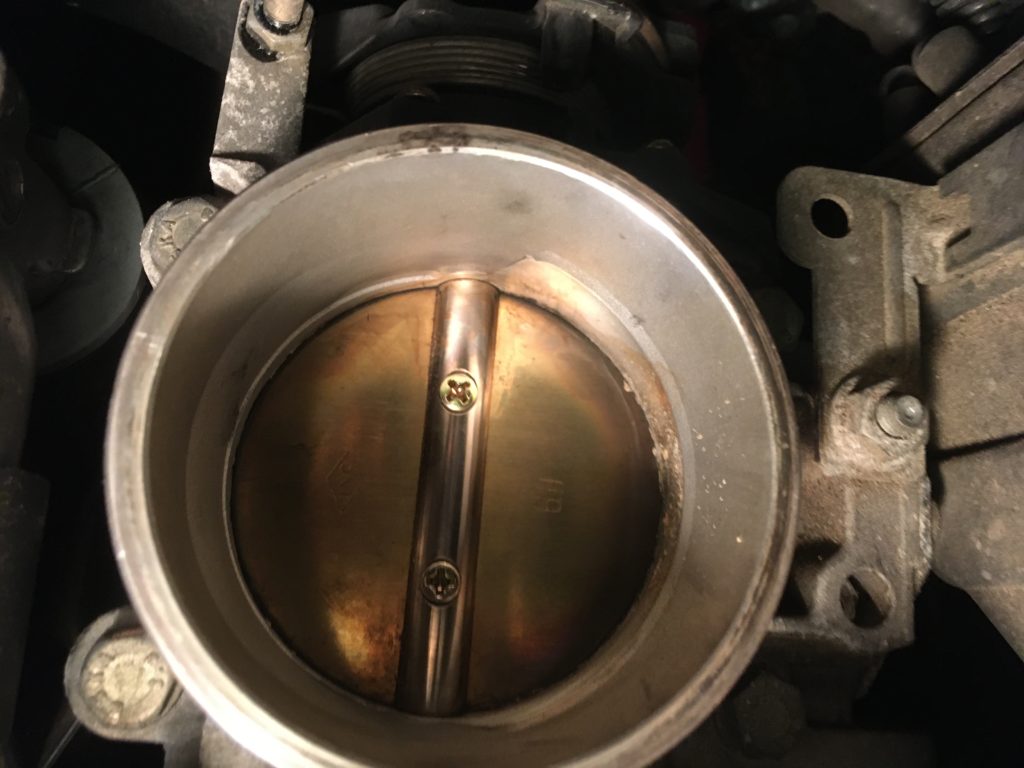
It didn’t look that bad, but there was just enough buildup to stick the throttle plate shut.
I put it all back together, started the car up, and verified that it revved freely. But a repair isn’t complete without a test drive. I dropped Zelda’s top, got in, edged onto the street, and wound it up.
Fixed.
Two things immediately struck me. First, I was reminded how much I love a repair like this: It had the Hack Mechanic hat-trick combination of zero cost, small degree of effort, and a binary success metric. (The car wasn’t working before, and now it was.) And, here, “working” literally meant turning *stumblecough* into vrooooom. I can’t fix the world, I can’t fix politics, I certainly can’t fix the coronavirus, but I could fix this, completely.
But the second was how even in a two-minute test drive, I was instantly reminded how much I missed having a little open roadster. It didn’t need to be Zelda. It didn’t even need to be a BMW (*gasp*). I knew that by that evening I’d be looking on Craigslist and Facebook Marketplace to see what people were selling.
But as soon as I found myself thinking that, the thought-bubble burst. I suppose I could safely go look at a car during this pandemic, agree with the seller as I did with Kim and Tyler that I needed to interact with the car but not with them, and glove-up and mask-up and do what needed to be done. But the reality is that the combination of risk and having less money for frivolous things made this momentary lust and passion, triggered by temperate April weather, the sun on my face, and the wind in my hair, a poor candidate for follow-through.
Plus, the reason I’d sold Zelda fifteen months ago—lack of garage space—hasn’t gone away. I still have four cars jammed in the can’t-move-two-of-them wintertime configuration in the Newton garage. One of those two (the two round-taillight 2002s) has to come out and be put somewhere. This means that to have garage space for a convertible, I’d need to sell not one car but two, and with the pandemic driving down values for anything except the best of the best, I’m unlikely to try to sell cars unless my hand is forced.
There was one last thing to do. I remembered that I had a spare battery-disconnect switch, one of the circular twist ones. I’d tried to put this in Zelda before selling her to Kim, but couldn’t get the rear floor cover to lie flat with it installed. Screw it, I thought; with the history of them letting the battery run down, having the switch and having them use it is more important. I found the switch and installed and tested it, then returned the car to its grateful owner.
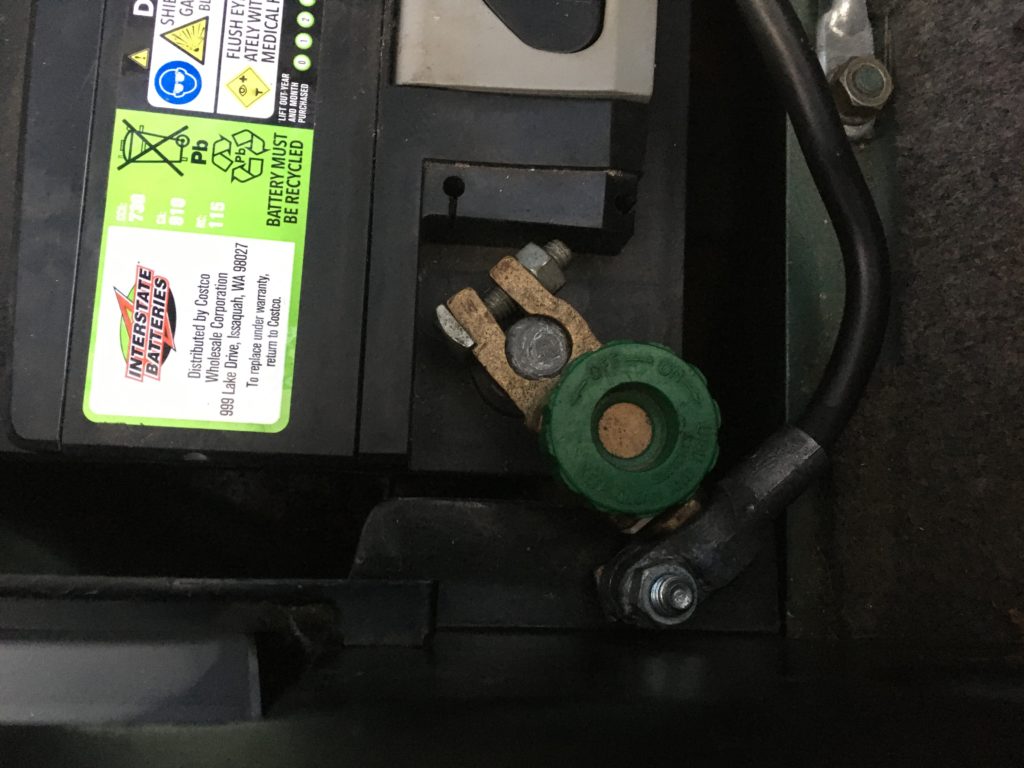
Run-down battery no more!
Kim was ecstatic and thankful. She said that if I ever wanted “therapy” with Zelda, the key was hanging inside the kitchen.
And then it dawned on me: Having Zelda four left turns away, owned by a grateful friend and neighbor, is the best possible resolution to this issue.
(Hum dee dum, dee dee dee… hands in pocket, whistling past the computer… no harm in looking… oh, what do we have here? ’78 barn-find Alfa Spider out in the Berkshires with the SPICA injection intact, two grand… no risk in that, right?)—Rob Siegel
Rob’s new book, Resurrecting Bertha: Buying Back Our Wedding Car After 26 Years In Storage, is available on Amazon here. His other books, including his recent Just Needs a Recharge: The Hack MechanicTM Guide to Vintage Air Conditioning, are available here on Amazon. Or you can order personally-inscribed copies of all of his books through Rob’s website: www.robsiegel.com.











